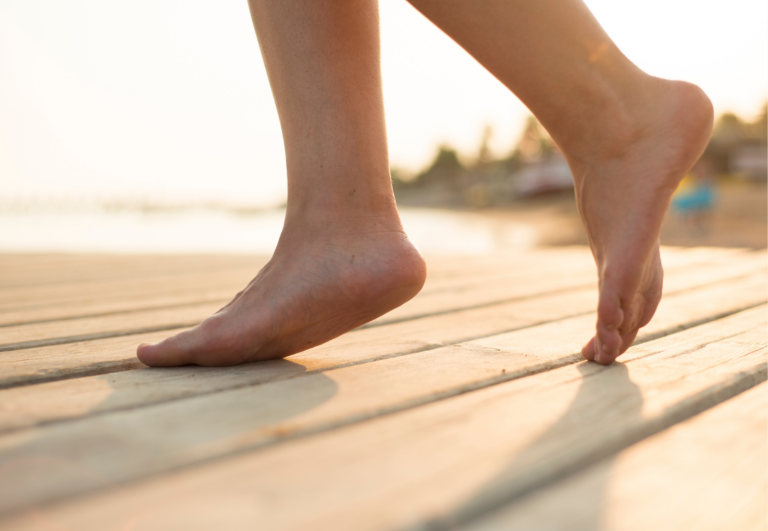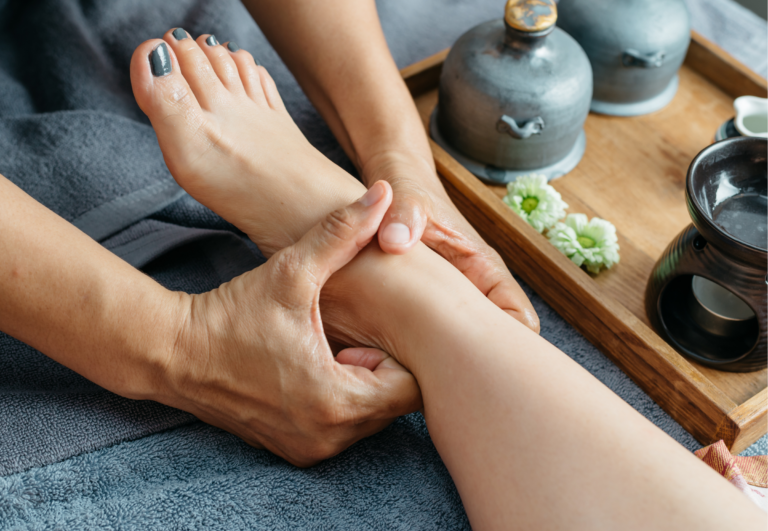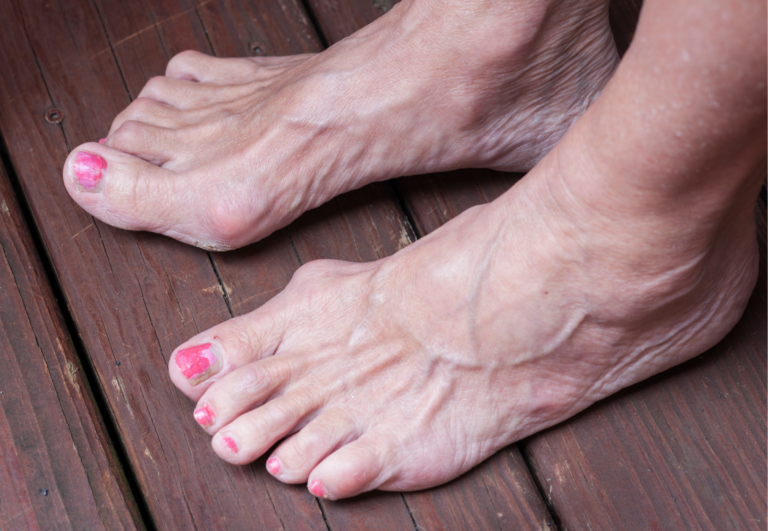Toe Spacers Usage Frequency: Optimal Scheduling for Healthy Feet
Toe spacers have become an intriguing solution for individuals seeking comfort and better foot health. As someone who regularly uses toe spacers, I’ve found that they can be quite beneficial in maintaining proper toe alignment, which is essential for balanced foot function. These simple yet effective devices are designed to fit between the toes, keeping them separate to reduce friction and correct overlapping digits.
In terms of design, toe spacers vary widely to accommodate different foot shapes and sizes, ensuring there’s a suitable option for most. Whether it’s for therapeutic reasons or to provide relief after a long day on your feet, incorporating toe spacers into your daily routine can be a game changer. Their usage frequency depends largely on personal comfort and the particular foot condition being addressed.
From my experience, regular use of toe spacers can contribute to the overall well-being of your feet. They support a more natural toe spread, which helps in distributing weight evenly during walking or standing. While they aren’t a cure-all, toe spacers are a helpful tool in a comprehensive approach to foot care, especially for those of us spending hours on our feet or participating in activities that put pressure on our toes.
How Often to Use Toe Spacers: Guidelines and Frequency
Incorporating toe spacers into daily life can be beneficial for foot health, improving alignment and relieving foot pain.
My guidance is grounded in practical experience with these devices.
Daily Wear Recommendations
For those integrating toe spacers into their daily wear, it’s important to start with a gradual introduction. A good initial duration is 30 minutes per day, increasing incrementally each week. Assess comfort levels continuously and consult a podiatrist if necessary. Individuals with a sedentary lifestyle may find longer periods of wear comfortable, but it’s essential to listen to your body.
- Week 1: Begin with 30 minutes of daily wear
- Week 2-3: Increase to 1-2 hours daily
- Month 1+: Slowly augment duration as comfort permits
Athletic and Therapeutic Use
For athletes and those using toe spacers for therapeutic purposes, like alleviating issues from running, specific recommendations vary. The use of toe spacers can be integrated during warm-ups and cool-downs, or during specific strengthening exercises. Consult with a healthcare provider for a tailored plan.
- Pre-Exercise: 15-20 minutes during warm-ups
- Post-Exercise: 30 minutes during cool-downs or post-exercise stretching
Long-Term Care and Maintenance
Maintaining toe spacers is straightforward. Wash them regularly with soap and water and inspect for signs of wear. As for long-term usage frequency, consistent, moderate use typically offers the best outcomes. For fashion-conscious individuals, many toe spacers are discrete enough to wear with a wide range of gear.
- Cleaning: Regularly with mild soap
- Inspection: Check for signs of wear or damage
- Replacement: As necessary, or if discomfort occurs
Remember, while toe spacers can be an excellent addition to foot health routines, they should not replace professional advice from a podiatrist or other healthcare providers.
Fit, Comfort, and Design Considerations
When choosing toe spacers, it’s crucial to consider how they fit, their design features for functionality, and what makes them comfortable. Making the right choice can enhance foot health and ensure a positive experience with toe spacers.
Choosing the Right Toe Spacer
Selecting toe spacers that suit your individual needs requires attention to material and size. Silicon-based toe spacers are favored for their flexibility and ease of cleaning. The right size ensures adequate pressure distribution and prevents unnecessary friction, which can lead to discomfort or even pain.
| Toe Spacer Size | Recommended Use |
|---|---|
| Small | Minimal spacing needs |
| Medium | Regular use |
| Large | Significant spacing |
Design Features for Optimal Function
Toe spacers should be designed to enhance stability and balance while walking or standing. An ergonomic design will adapt to the natural contour of your feet, providing optimal cushioning and support. Look for designs that distribute pressure evenly across your toes, as these will offer the greatest comfort and functionality.
| Design Element | Function |
|---|---|
| Contoured Shape | Mimics foot shape for better stability |
| Even Thickness | Promotes balanced pressure distribution |
Tips for Maximum Comfort
For the greatest comfort, it’s vital to choose toe spacers that can be worn with your usual footwear. They shouldn’t be too bulky or restrict movement inside your shoes. Check if they have enough cushioning to reduce pressure points without compromising the fit of your footwear. Also, consider the texture – a smooth, soft surface reduces friction and increases comfort during prolonged use.
- Trial Period: Wear your toe spacers for short periods initially, gradually increasing the time.
- Toe Spacer Care: Opt for spacers that are easy to clean, as this will ensure they remain hygienic and maintain their comfort level over time.
Purchasing and Product Selection
When looking to purchase toe spacers, it’s crucial to consider their quality, where to buy them, and the balance between price and performance. I’ll explain how to select a product that meets your needs and offers the best value.
Assessing Quality and Effectiveness
The materials used in toe spacers like Zentoe impact their effectiveness and durability. Look for silicone-based spacers, as they offer flexibility and are skin-friendly. Highly-rated products often combine comfort with functionality, ensuring that they work with modern footwear without compromising performance.
Where to Buy Toe Spacers
Toe spacers are readily available at health stores, but a wider selection can be found online. Platforms like Amazon provide user reviews, which can be helpful in gauging the effectiveness of various brands.
Price vs. Performance
While reviewing options, compare the price of the toe spacers to their reported performance. A higher price doesn’t always mean better quality. Instead, focus on products with the best reviews and ratings within your budget to ensure you’re making a cost-effective choice.
Addressing Specific Foot Conditions
Toe spacers are a non-invasive solution for various foot conditions. When used properly, they can aid in pain relief, provide cushioning, and even delay or prevent the need for surgery in some instances.
Toe Spacers for Bunions and Hammertoes
Bunions and hammertoes are common deformities that can cause significant discomfort. For bunions, I recommend toe separators to help realign the big toe and relieve pressure on the bunion. They can also help prevent the bunion from getting worse. For hammertoes, which are often clawed or bent, toe spacers offer cushioning and work to straighten the toes, thus reducing pain. Regular use, especially during hours of rest, can gradually improve these conditions.
Managing Diabetes and Foot Sensitivity
Those with diabetes need to take extra care of their feet. A complication of diabetes is a decrease in foot sensitivity, which can lead to unnoticed injuries. By using toe spacers, the feet can maintain better alignment and reduce the risk of such injuries. Healthcare professionals should be consulted as part of a comprehensive foot care plan. The use of toe separators can be one part of this plan, particularly for those who experience foot pain or are recovering from foot-related diabetes complications.
Support for Athletes and Active Lifestyles
Athletes often experience foot pain from the stress of repetitive movements and lifting. Toe spacers can be beneficial by promoting proper foot alignment, which, in turn, can improve balance and performance. In some cases, they can be used as a preventative measure to avoid the development of conditions like hammertoes, or to provide relief after an intensive workout or competition. While not a substitute for proper medical advice from a podiatrist, toe spacers are a handy tool in any athlete’s kit for maintaining foot health.
By incorporating these simple yet effective devices into your routine, you can take actionable steps towards better foot health, regardless of whether you’re dealing with deformities, diabetes, or simply leading an active lifestyle.

Types of Toe Spacers and Materials
In my experience as a toe spacer expert, I’ve seen that the right type and material of toe spacer can make a significant difference in comfort and effectiveness. These devices, also known as toe spreaders, come in various designs, each suited for specific needs and preferences.
Silicone Toe Spacers
Silicone toe spacers are durable and flexible, offering a comfortable fit for prolonged use. My interaction with silicone spacers has shown that they are ideal for people with sensitive skin due to their hypoallergenic nature. They can conform to the shape of your toes, providing a personalized fit This study details the effectiveness of custom-mold silicone toe spacers in managing hallux valgus.
Foam Toe Spacers
Foam toe spacers are soft and cushiony, often preferred for their lightweight and breathable design. They are typically used for temporary relief and are best for individuals needing mild spacing and realignment. Their porosity, however, might make them less durable than their silicone or gel counterparts.
Gel-based Toe Spacers
Gel-based spacers incorporate a blend of materials designed to mimic the soft tissues of the foot. They provide a balance between firmness and conformity. As I have noticed, their flexible design is often preferred for dynamic activities since they offer a gentle yet effective spacing, distributing pressure evenly and reducing friction between toes.
By choosing the right toe spacer in terms of design and material, like silicon, gel, or foam, one can enjoy improved toe alignment and relief from discomfort. Each type provides a unique set of benefits that cater to different needs.
Benefits of Using Toe Spacers
Toe spacers, when used properly, can offer a range of benefits to those dealing with foot discomfort or looking to improve foot health. They are designed to address issues directly related to toe alignment and overall foot structure.
Alignment and Balance Improvement
Improving toe alignment is a fundamental benefit of using toe spacers. These simple devices work by gently separating the toes, which can realign the big toe and help correct conditions like bunions and hammertoes. Consistent use of toe spacers may improve the distribution of weight across the foot which contributes to better balance and foot strength.
Pain Relief and Prevention
Many individuals experience pain from corns, calluses, or blisters due to toes rubbing against each other or against footwear. Toe spacers can help alleviate this pain by preventing toes from overlapping. Additionally, they can aid in the recovery from foot surgeries by maintaining correct toe placement and reducing the risk of recurrence.
Enhanced Foot Mechanics
Toe spacers can play a role in enhancing the mechanics of the foot. They support the natural arch of the foot, which may offer relief to people suffering from flat feet or plantar fasciitis. By promoting proper toe spread, these tools can also help in strengthening ligaments and muscles in the feet, leading to improved foot health and function.





